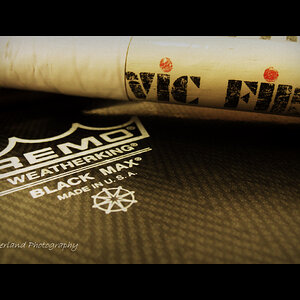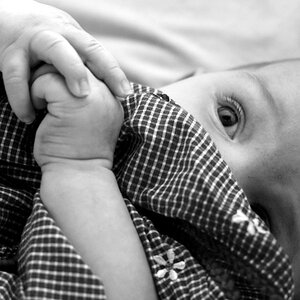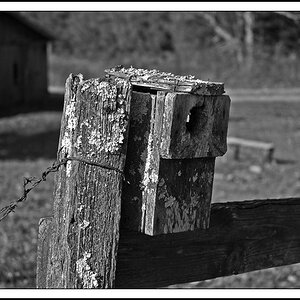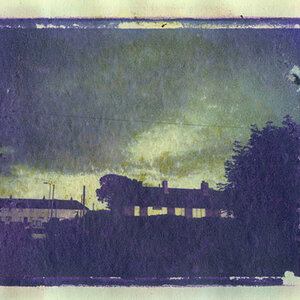Bob_McBob
TPF Noob!
Personally I buy all my used camera equipment on eBay. If you play your cards right, you can get some amazing deals. You have to be careful about doing that, however. Make sure you ask lots of questions. If the seller doesn't respond, just ignore the auction. Be sure to always check out their feedback. When I want to buy something, I search for it, and add all the relevant results to My eBay, so I can keep track of the prices. I find the ones I'm most interested in, and pay particular attention to them. I also check out how much the item has been going for in the past (Search-->Advanced Search-->Completed Items only). Set a limit on what you're willing to pay for one of these cameras, and don't bid over it. There's a great temptation to bid "just a little more," which can end up with you paying way too much for the camera  . It's not worth bidding on an item until the last 15-30 seconds. Before that, you're just driving up the price. What I did for the last two items I bought was use a "sniping" service at http://www.auctionsniper.com They'll bid for you at any point in the auction (for instance, 5 seconds before the end). They give you three free "snipes" to begin with, which is great for people like me who don't buy a lot of stuff. To start off, you'll probably want to get a camera that comes with at least a basic 50mm lens, which most do. They're dirt cheap, and it would be easier to just buy it with the camera. If you're willing to spend a little more, kits (ie camera, multiple lenses, flash, etc.) usually go for far less than the individual items that make them up are worth. I've had some decent experiences buying "as is" items, but I don't think that's the sort of thing you'd want to do. Here's a list of questions I would ask:
. It's not worth bidding on an item until the last 15-30 seconds. Before that, you're just driving up the price. What I did for the last two items I bought was use a "sniping" service at http://www.auctionsniper.com They'll bid for you at any point in the auction (for instance, 5 seconds before the end). They give you three free "snipes" to begin with, which is great for people like me who don't buy a lot of stuff. To start off, you'll probably want to get a camera that comes with at least a basic 50mm lens, which most do. They're dirt cheap, and it would be easier to just buy it with the camera. If you're willing to spend a little more, kits (ie camera, multiple lenses, flash, etc.) usually go for far less than the individual items that make them up are worth. I've had some decent experiences buying "as is" items, but I don't think that's the sort of thing you'd want to do. Here's a list of questions I would ask:
1) Photos of: pressure plate, shutter curtain, take-up spool.
2) Has the lens got dust between the elements? Is there dust inside the viewfinder? Is the mirror clean?
3) Are the meter and shutter working correctly? Is the camera in good working order? Are the light seals and mirror foam intact/new? Usually these questions are answered in the auction. If not, be sure to ask!
Let me give you some explanations for these questions. First, the photos. The pressure plate is a metal plate on the camera back (the part that folds out when you open the back) that holds the film flat behind the shutter. The shutter curtain is a piece of cloth (well, multiple pieces, but you only see one) that travels horizontally to expose the film for a certain length of time. If this has anything on it, or is at all dimpled or wrinkled, ignore the auction. It's the most important part of the camera, and any problem here will mean a lot of money to repair. The take-up spool is where the film is taken up after coming from the film cassette. A lot of wear here is a good indication that the camera has seen a lot of use, and might not be in great shape internally. Same goes for the pressure plate.
Lens, mirror, viewfinder. Dust inside the elements (glass segments) of the lens probably won't show up in photos, but it's good to know beforehand. Scratches on the front or back will probably show up as flaring in bright photos, so you probably don't want a scratched lens. The mirror should be free of gunk and other spots, because these will show up as dark spots in the viewfinder, which is annoying as hell. Cleaning SLR mirrors is somewhat nerve-wracking, it's very easy to screw them up accidentally. The viewfinder should hopefully be free of dust, but whether it makes a difference is up to you, of course.
The camera should obviously be in good working order, you don't want to pay to have it fixed right after you get it. The foam that the mirror touches when it's flipped up has often disintegrated on older cameras, so it doesn't perform very well, and may get stuck to the mirror and get inside the viewfinder. Not a very nice situation. This can also happen to the light seals inside the back (thin strips of foam), which can be just as bad. You don't want bits of foam going all over the place inside the camera. You can actually repair this problem yourself for about $10-15, so it's not as bad as some other problems might be.
1) Photos of: pressure plate, shutter curtain, take-up spool.
2) Has the lens got dust between the elements? Is there dust inside the viewfinder? Is the mirror clean?
3) Are the meter and shutter working correctly? Is the camera in good working order? Are the light seals and mirror foam intact/new? Usually these questions are answered in the auction. If not, be sure to ask!
Let me give you some explanations for these questions. First, the photos. The pressure plate is a metal plate on the camera back (the part that folds out when you open the back) that holds the film flat behind the shutter. The shutter curtain is a piece of cloth (well, multiple pieces, but you only see one) that travels horizontally to expose the film for a certain length of time. If this has anything on it, or is at all dimpled or wrinkled, ignore the auction. It's the most important part of the camera, and any problem here will mean a lot of money to repair. The take-up spool is where the film is taken up after coming from the film cassette. A lot of wear here is a good indication that the camera has seen a lot of use, and might not be in great shape internally. Same goes for the pressure plate.
Lens, mirror, viewfinder. Dust inside the elements (glass segments) of the lens probably won't show up in photos, but it's good to know beforehand. Scratches on the front or back will probably show up as flaring in bright photos, so you probably don't want a scratched lens. The mirror should be free of gunk and other spots, because these will show up as dark spots in the viewfinder, which is annoying as hell. Cleaning SLR mirrors is somewhat nerve-wracking, it's very easy to screw them up accidentally. The viewfinder should hopefully be free of dust, but whether it makes a difference is up to you, of course.
The camera should obviously be in good working order, you don't want to pay to have it fixed right after you get it. The foam that the mirror touches when it's flipped up has often disintegrated on older cameras, so it doesn't perform very well, and may get stuck to the mirror and get inside the viewfinder. Not a very nice situation. This can also happen to the light seals inside the back (thin strips of foam), which can be just as bad. You don't want bits of foam going all over the place inside the camera. You can actually repair this problem yourself for about $10-15, so it's not as bad as some other problems might be.



![[No title]](/data/xfmg/thumbnail/31/31011-439c1242fe08cf6b54f32bf06523a567.jpg?1619734567)

![[No title]](/data/xfmg/thumbnail/37/37603-739c5d9b541a083a12f2f30e45ca2b7b.jpg?1619738147)







